- 2-D animation
- 3-D animation
- Abstract
- Abstract Painting
- Alt. process photography
- Animation
- Architect
- Archivist
- Art History
- Arts Writer
- BFA
- Blacksmith
- Book arts
- Book Illustration
- Branding
- Calligraphy
- Caricature
- Carpentry
- Ceramic
- Collaborative/collective
- Collage
- Color Photography
- Comics
- Commercial Photography
- Commission
- Community art
- Concept Art
- Conceptual
- Construction
- Copy photography
- Curator
- Development
- Digital 3-D modeling
- Digital Fabrication
- Digital Media
- Digital Photography
- Documentary
- Eco-Art
- Editor
- Editorial photography
- Engraving
- Etching
- Event photography
- Fab Lab
- Fashion
- Feminist
- Fiber
- Fiber Art
- Figure
- Film
- Film Photography
- Freelance
- Furniture Design
- Gallerist
- Game developer
- Garments
- Gender
- Goldsmith
- Graphic design
- Health and medical
- Home furnishing
- Identity Design
- Illustration
- Installation
- Interactive
- Interior Design
- Interior Painting
- Jewelry
- Kinetic
- Landscape
- Landscape Architect
- Lettering
- Letterpress
- Logo Design
- Master Printer
- Mechanical drawing
- Metal Fabrication
- Metalsmithing
- MFA
- Miniature
- Model
- Model maker
- Monotype
- Mural
- Mural Artist
- Music
- Packaging Design
- Painting
- Performance art
- Photography
- Porcelain
- Portrait
- Portraiture
- Preparator/ Art Handler
- Printmaking
- Product Design
- Public Art
- Public Engagement
- Representational
- Restoration
- Robotics
- Screenprinting
- Sculptor
- Sculpture
- Sign painter
- Social media
- Social Practice
- Soft Sculpture
- Stone
- Stop Motion Animation
- Street Art
- Surface Design
- Teaching artist
- Textile
- UI Design
- Video
- Visual Identity
- Web Design
- Wedding photography
- Window display
- Woodcut
- Woodworking
- Writer
The Amorphous Body: Objects of Fascination, Objects of Disgust
Connect me with Violet Weiner
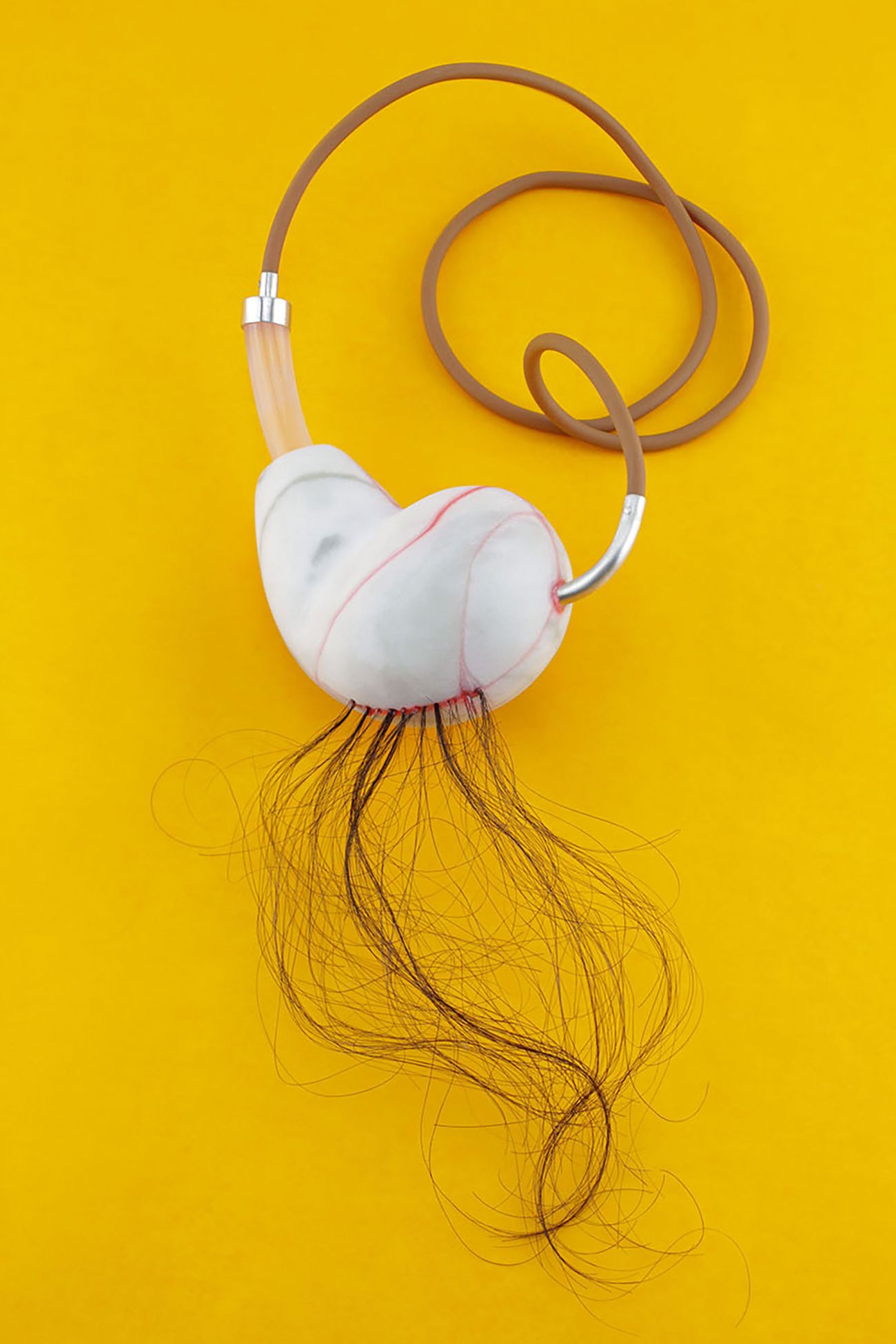
Teratoma. 2019. Marble, rock crystal, hair, sterling silver, epoxy plastic, rubber. 18" x 4" x 2"
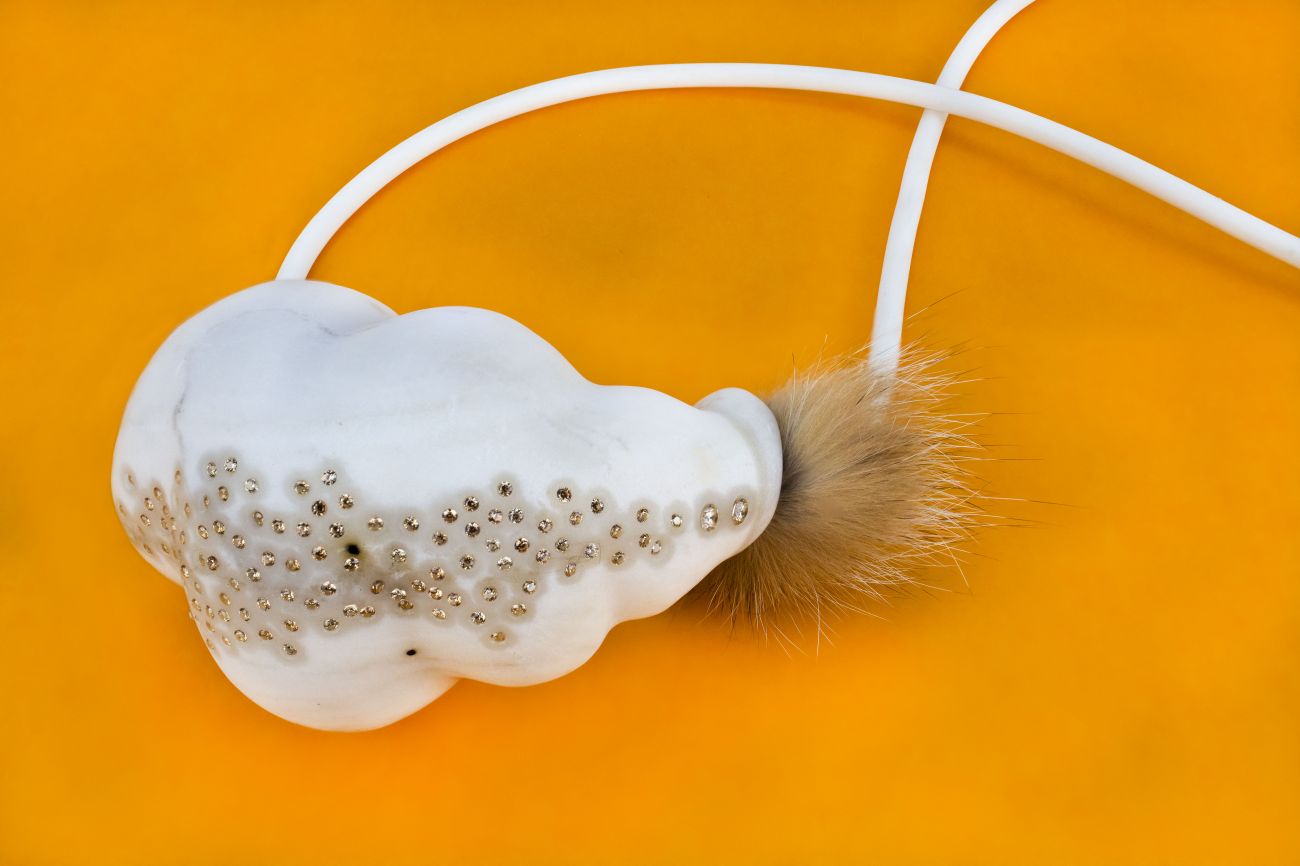
Pupae. 2019. Marble, cubic zirconia, silicone, sterling silver, fox fur. 18" x 3.5" x 2"
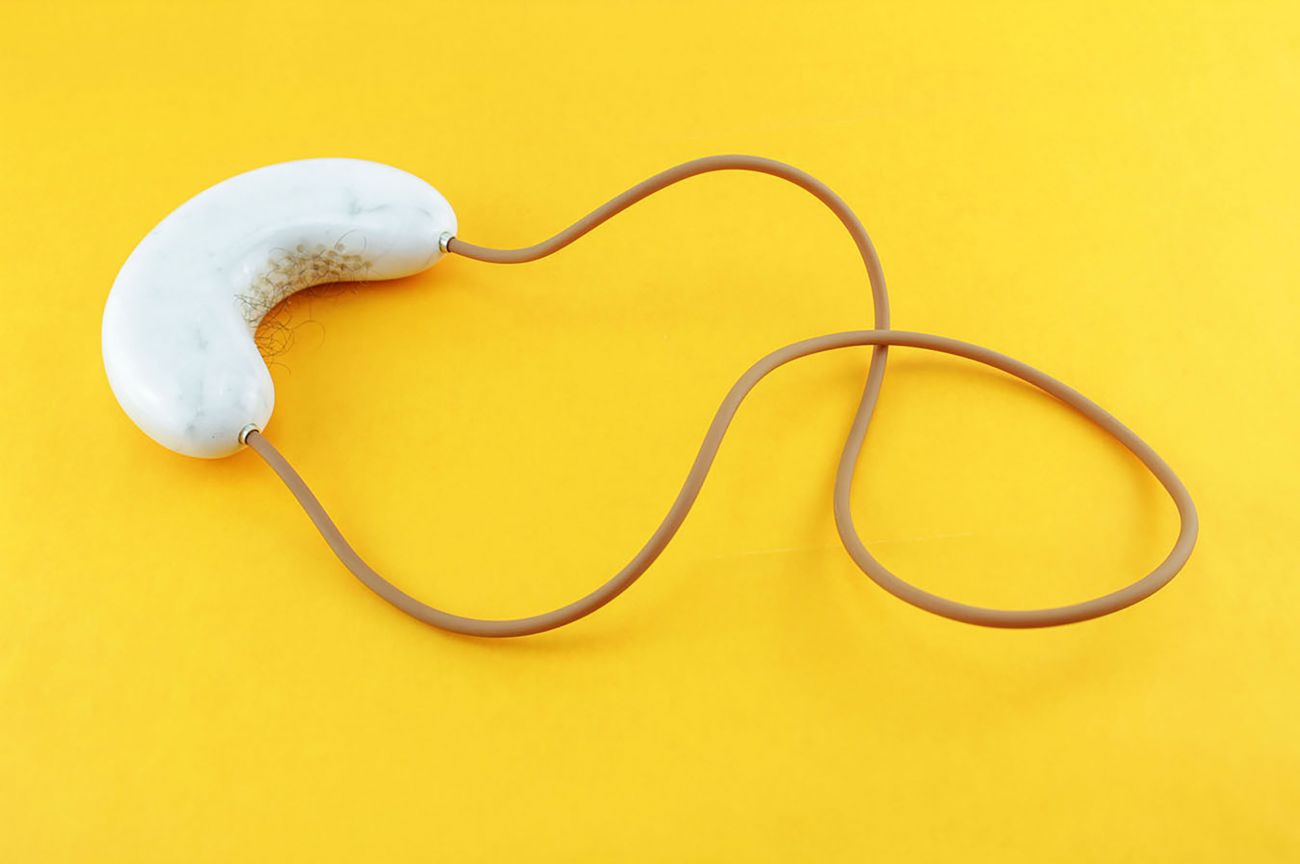
Pubic. 2019. Marble, pubic hair, sterling silver, epoxy plastic, rubber. 16" x 4" x 1"
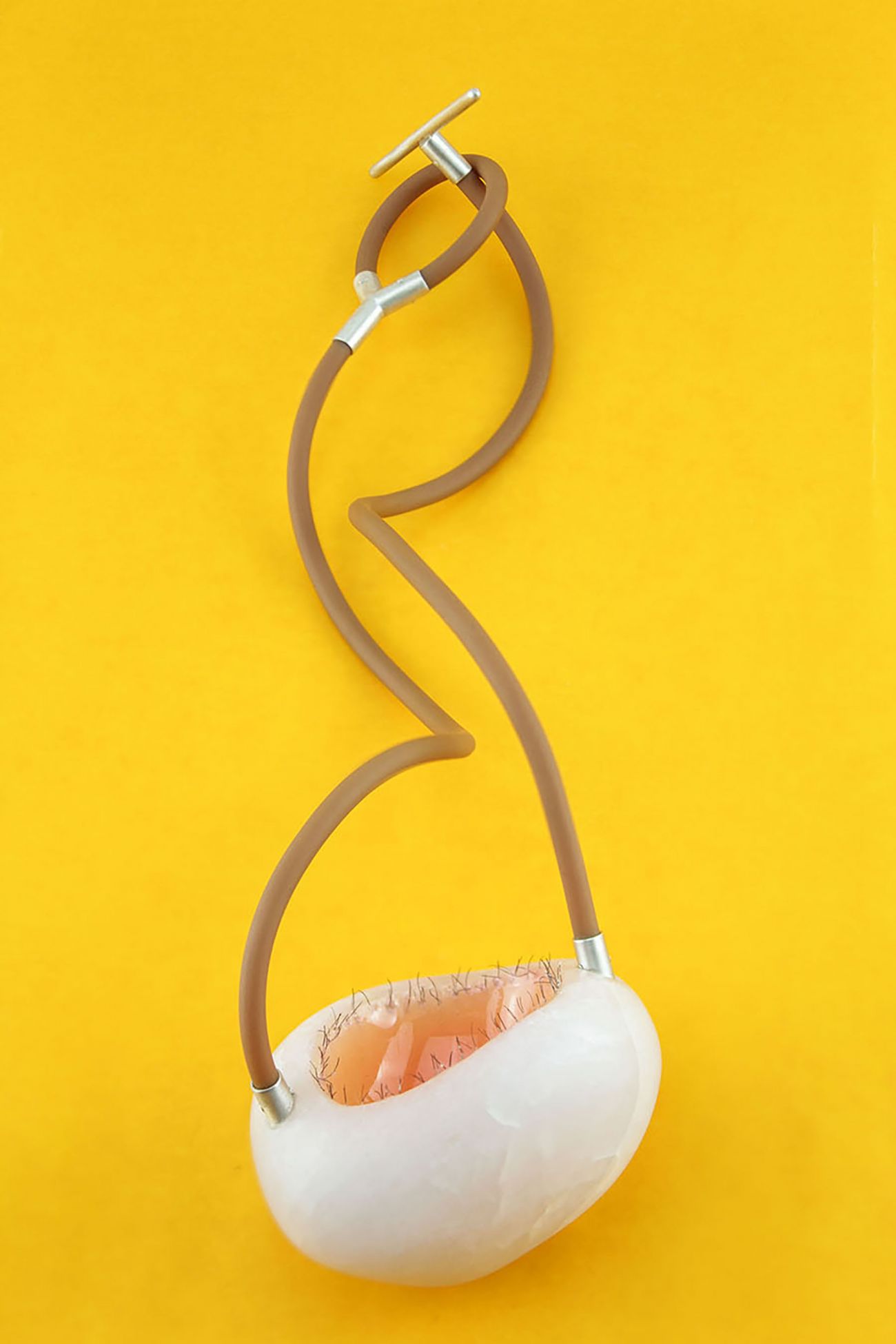
Axilla. 2019. Quartz, underarm hair, sterling silver, epoxy plastic, rubber. 16" x 2.5" x 2"
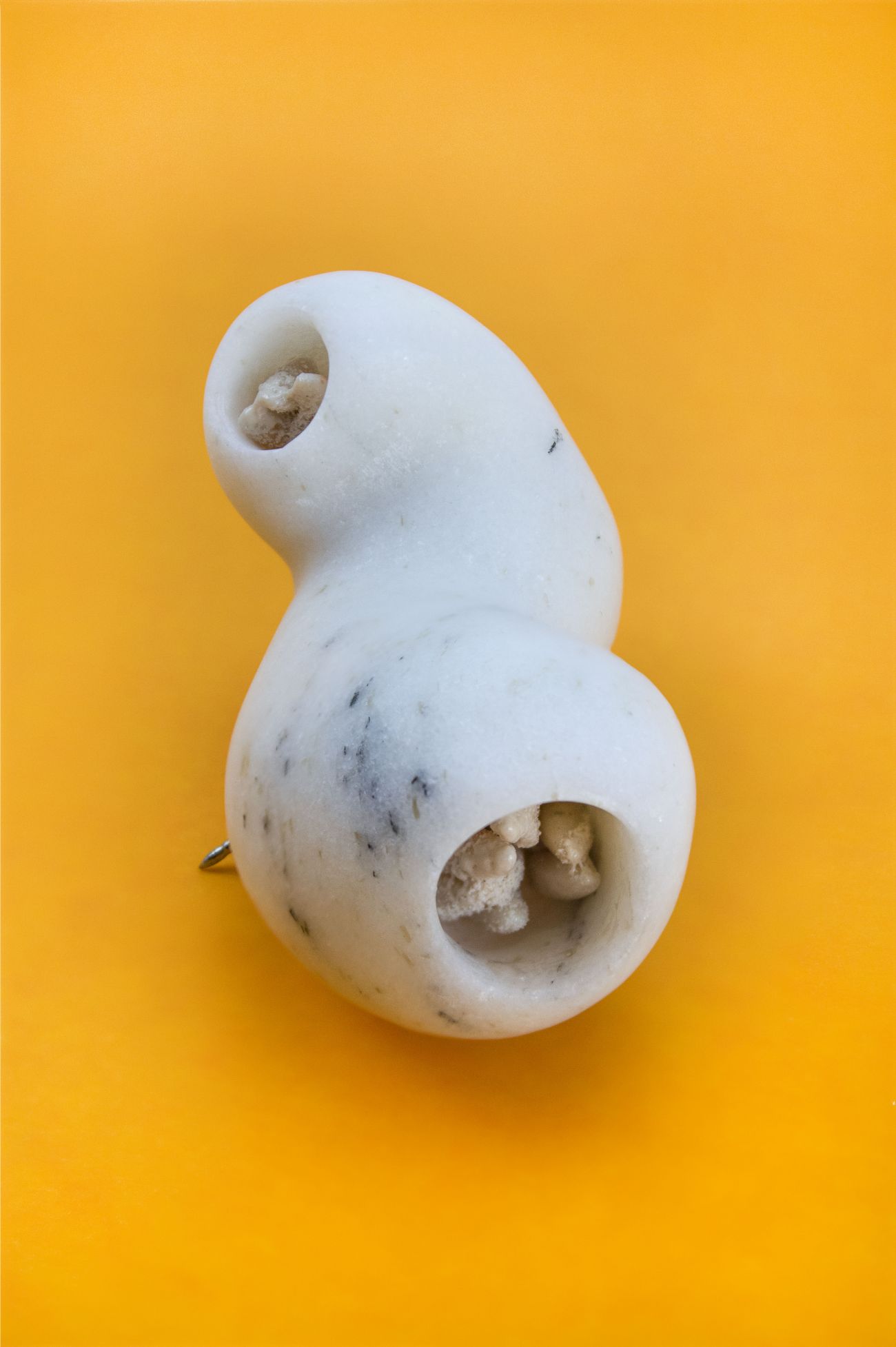
Filiform I. 2019. Marble, glass, vitreous enamel, sterling silver, steel. 2" x 1.5" x 1.25"
Description
Our bodily remnants, such as fluids, shed hair, and other refuse, confront the viewer with abjection – what has been physically or psychologically been cast off. The abject reminds us of what we try to forget – our filth, our mortality, the inevitability of the body's decay. Elements of the uncanny are also included in the abject. In Western culture, objects and shapes that elicit these feelings of unease are fairly universal. We have an instinctual, visceral reaction to these forms due to millennia of accumulated cultural knowledge. Even when highly abstracted, visual and tactile features that reference biological suffering such as holes, tumors, and other protrusions provide an immediate psychological connection to physical suffering and the emotions that these symptoms evoke. In my work, I investigate abstracting and transforming elements of the abject through the juxtaposition of objects and materials that have vastly different sociocultural connotations – gemstones and fingernails, precious metals and pubic hair. I have no interest in making work that's straightforwardly attractive or grotesque. My work confuses these emotional binaries between seduction and repulsion through both visual qualities and material tactility – how the piece warms with body heat, causes static cling, or leaves marks on the skin – and the way in which it impacts the wearer.

